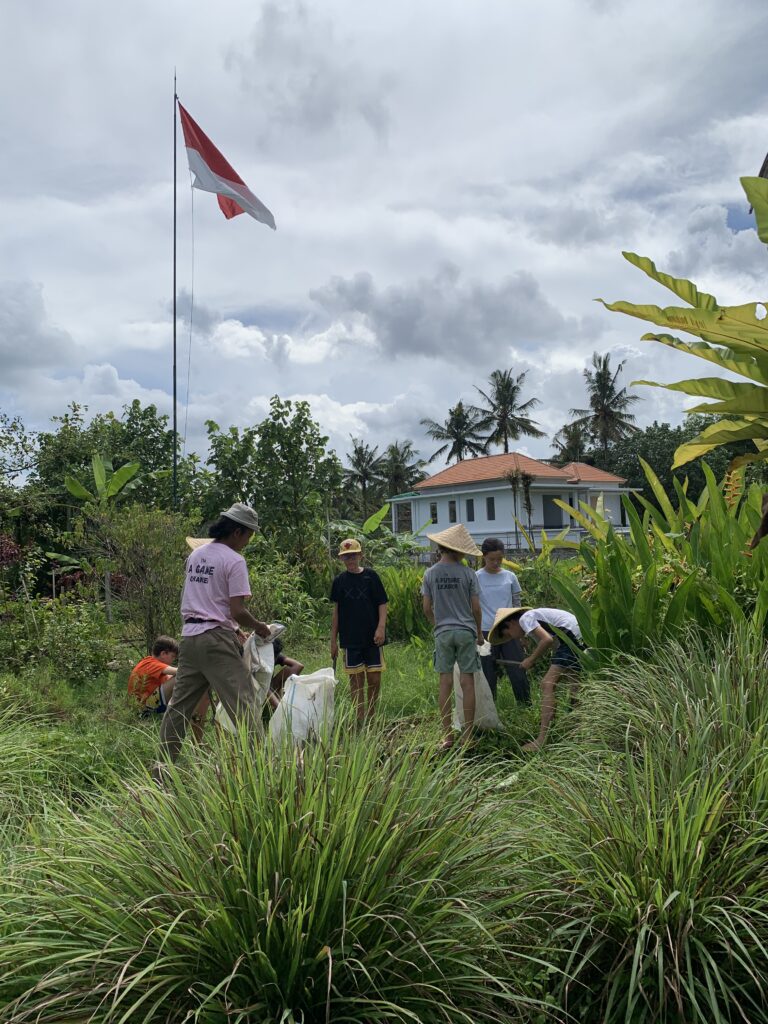In the heart of Empathy School, nestled among its innovative structures, the integration of rice field paths and various natural elements into the school’s design stands as a testament to its commitment to holistic education. This thoughtful design not only enhances the aesthetic value of the school but significantly enriches the educational experience for all students, providing them with a constant interaction with nature.
Eric, the school’s principal, along with his dedicated team of educators, envisioned a campus that mirrored the learning philosophy of the school—blending academic rigor with nature’s tranquility. The paths meandering through rice fields on the school grounds were designed to provide not just a route from one building to another but a journey through an ever-changing landscape that engages the senses and calms the mind.
“One of our core beliefs,” Eric explained during a staff meeting, “is that the environment in which children learn is just as important as what they learn. These rice field paths are living classrooms offering endless opportunities for spontaneous lessons on ecology, agriculture, and sustainability.”
Walking along a rice field path, students observe the lifecycle of rice, understand the ecosystems supporting agriculture, and learn the value of sustainable farming practices firsthand. The paths are bordered with native plants and flowers, attracting a variety of wildlife and providing a habitat for important pollinators. Benches placed at intervals offer spots for students to sit, reflect, or engage in outdoor classes.
During a typical school day, Mr. Larson, a science teacher, might pause his class’s walk along the path. “Notice how the rice plants change over the season,” he’d say, pointing to the bending stalks laden with grain. “Each stage of growth depends on specific environmental conditions. Can anyone tell me what might happen if these conditions change due to climate factors?”
This open-ended question sparks a lively discussion among the students, turning a simple walk into a deep learning experience about climate change and its impacts on agriculture.
The natural elements incorporated into the school’s design also play a crucial role in the social and emotional development of students. The serene environment provided by the rice fields and surrounding natural features offers a respite from the usual pace of school life, reducing stress and promoting mental well-being.
Eric, observing students quietly sketching in their art notebooks by the rice field, reflects on this impact. “These moments, when they are simply immersed in nature, are when some students find peace and inspiration. It’s essential for creativity and emotional balance,” he muses.
The integration of these natural elements extends beyond the students; it invites community interaction. Parents and local community members are often invited to participate in harvesting events or seasonal festivals held on the paths, fostering a strong community bond and providing a platform for experiential learning.
“These rice fields are not just part of our school; they are part of our wider community,” Eric remarks during a community gathering. “They remind us of our interdependence and the responsibility we share in caring for our environment.”
Diverse outdoor spaces play a critical role in promoting both the physical and mental well-being of children. These environments offer more than just a place to play; they provide a stimulating context in which children can explore, learn, and grow. The benefits of such spaces are substantial, encompassing a wide range of positive outcomes from enhanced physical health to improved emotional and cognitive development.
The presence of diverse outdoor environments naturally encourages children to be more active. Unlike traditional playgrounds, these spaces often include natural landscapes such as woods, fields, streams, and varied topographies that challenge children physically and invite them to run, climb, jump, and explore. This type of physical activity is not only enjoyable but also crucial for developing motor skills, coordination, and overall physical fitness.
Research supports the assertion that children who have regular access to diverse outdoor spaces are physically healthier. A study by Fjørtoft (2001) found that children who played regularly in varied natural environments developed better motor skills, including balance and agility, compared to children who had limited access to such environments. This kind of physical activity is also linked to reduced rates of obesity, a growing concern in many parts of the world.
Beyond physical health, diverse outdoor spaces significantly impact children’s mental and emotional well-being. Natural settings have been shown to reduce stress, anxiety, and depression in children. The calming effect of nature, often referred to as “nature therapy,” helps children regulate their emotions and cope with stress more effectively.
Kuo and Taylor (2004) demonstrated in their research that children with ADHD exhibited fewer symptoms after spending time in green outdoor settings. These findings suggest that regular interactions with nature can be particularly beneficial for children with attention disorders, helping them concentrate better and feel more at peace.
The impact of outdoor spaces extends into cognitive and social domains as well. Natural environments stimulate imaginative play, which is crucial for cognitive development. Children create their own games, rules, and narratives, which not only enhances creativity but also improves language skills and executive function.
Socially, diverse outdoor spaces foster interactions that are less structured than those found in typical playgrounds, allowing children to learn vital social skills such as negotiation, cooperation, and leadership. These environments often require children to work together to overcome physical challenges or create group games, promoting healthy social development.
Wells (2000) found that children’s self-discipline improved when they had access to green spaces for playing and learning, suggesting that these environments help enhance cognitive functions such as concentration and impulse control.


 Previous Post
Previous Post